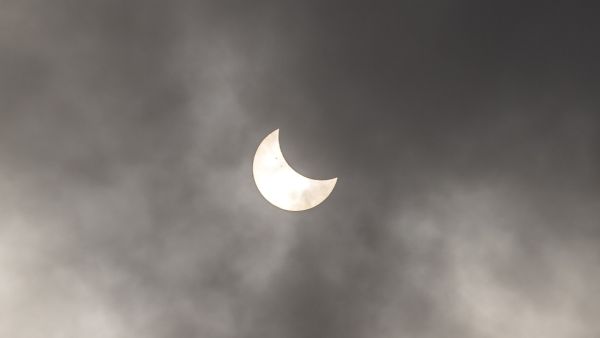ALBAWABA - A total solar eclipse plunged parts of Australia and Southeast Asia into brief midday darkness Thursday, wowing crowds who have been camping out to watch pse the sun disappear.
Here is the solar eclipse in real time from the Exmouth Gulf. #SolarEclipse2023 pic.twitter.com/5A583Z2E8u
— Chris Lewis (@a_film_maker) April 20, 2023
Commenting on the eclipse, the National Aeronautics and Space Administration (NASA), said that the Moon will pass between the Sun and Earth, "creating a total solar eclipse visible from Australia and Southeast Asia."
"Starting at 10:30 p.m. EDT Wednesday, April 19 (0230 UTC Thursday, April 20), we will share live telescope views of the eclipse," NASA added.
Under a cloudless sky in Indonesia, about 20,000 eclipse chasers watched the rare eclipse plunge part of Australia’s northwest coast into midday darkness with an accompanying temperature drop, The Associated Press reported.
LOOK UP, SELENOPHILES! ?
— The Philippine Star (@PhilippineStar) April 20, 2023
A rare hybrid solar eclipse graces the skies of Parañaque City on Thursday morning.
Such celestial events happen about once every decade—the last one was in 2013 and the next one isn’t until 2031. pic.twitter.com/iMTNzoOU89
"The remote tourist town of Exmouth, with fewer than 3,000 residents, was promoted as one of the best vantage points in Australia to see the eclipse that also crossed remote parts of Indonesia and East Timor," the AP said.
It said an international crowd had been gathering for days, "camping in tents and trailers on a red, dusty plain on the edge of town with cameras and other viewing equipment pointed skyward."
?? This total solar eclipse on 4/19/23 was visible from Australia and Southeast Asia. ? Credit: NASA pic.twitter.com/0JBIX5qX4U
— Discovery (@Discovery) April 20, 2023
NASA astronomer Henry Throop was among those at Exmouth cheering loudly in the darkness, the AP said. "Isn’t it incredible? This is so fantastic. It was mind-blowing. It was so sharp and it was so bright. You could see the corona around the sun there," the visibly excited Washington resident said, according to the news agency.
The hybrid solar eclipse tracked from the Indian Ocean to the Pacific Ocean and was mostly over water. "The lucky few people in its path either saw the darkness of a total eclipse or a “ring of fire” as the sun peeked from behind the new moon," the AP said.
Such celestial events happen about once every decade: The last one was in 2013 and the next one isn’t until 2031, according to the New York-headquartered news agency. It pointed out that they occur when Earth is in the “sweet spot” so the moon and the sun are almost the exact same size in the sky, said NASA solar expert Michael Kirk.







